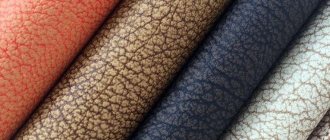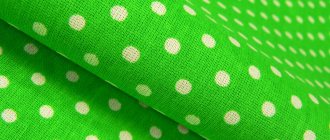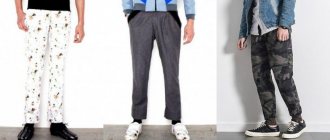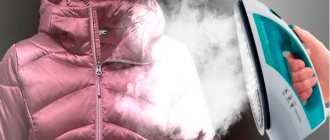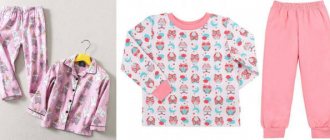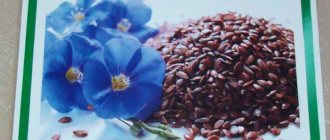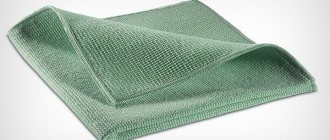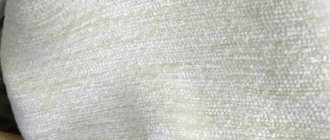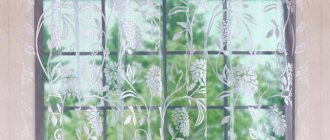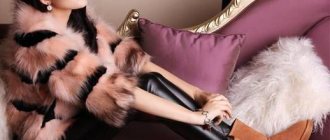During operation, abrasions, cracks, stains and snags may occur, which sooner or later will lead to the formation of bald spots and holes requiring expensive repairs.
If you think the only way to prevent this is to use protective covers. Then what is the point of spending money on such furniture, the beauty of which will always be hidden under the mask of bedspreads?
There are other ways to care for eco-leather furniture that will preserve its original appearance after many years of daily use.
A few important rules
Before buying eco-leather furniture, first of all think about practicality. The purchase will not be beneficial if:
- There are animals in the house that like to sharpen their claws on the end of the wooden frame.
- There are small children who love to draw with felt-tip pens.
- There is a lot of traffic in the room during the day.
All this will lead to the fact that the furniture will be constantly exposed to negative influences and will quickly lose its attractive appearance. Therefore, if you have a sofa or chairs made of this material in your home, remember a few important rules:
- Any dirt must be removed immediately using a soft damp cloth or rag - eco-leather is difficult to clean from old dirt, as the surface can easily be damaged, leaving scratches.
- Furniture needs daily preventive cleaning - small debris accumulates in the joints and depressions, which will stick to clothes in a couple of days.
- If the stain is old and dried, then you need to apply a damp soft cloth to it for 2-3 hours, waiting until it softens and moves away from the surface on its own without applying force.
- It is better to install eco-leather furniture away from radiators and radiators, since they dry out the air, which will cause cracking of the coating if it is not treated with special moisturizing mixtures.
- If there are animals in the house, then they should be weaned from sharpening their claws on the sofa. There are special products that emit an unpleasant odor, scaring the animal away from the furniture.
- Before using a cleaning product, be sure to check whether it is suitable for eco-leather. Typically, the furniture manufacturer gives recommendations regarding care, indicating specific brands of detergents and cleaning products.
By following these rules, eco-leather furniture will last for many years, and it will look the same as after purchase.
What kind of fabric upholstery is there?
Fabric is the most popular upholstery material. It is chosen for its tactility and variety of colors and textures. Fabric upholstery is distinguished by the degree of naturalness, durability, ease of care and aesthetics. Choosing the wrong bed upholstery is one of the most common mistakes when planning a bedroom. Let's take a closer look at the types of fabric:
Velours
Velor is the softest material among the upholstery options. Velor feels like velvet, and if you run your fingers over it, you will notice a “writing effect” (it changes the direction of the pile and leaves a mark). Furniture made from velor is often used by designers in interiors - long pile adds nobility, and due to the wide palette of colors, velor is easy to fit into the interior.
Velor is a natural and eco-friendly fabric. This fabric is also practical and abrasion resistant. The main disadvantage: it is difficult to remove stains from this fabric on your own.
Velveteen
Corduroy is a dense fabric with a pile, the texture resembles velvet. The main difference from velor is in the height and texture of the pile - in corduroy it is shorter and divided into longitudinal stripes “ribbed”. Corduroy is easy to recognize by the iridescence of color on the surface and its softness. Corduroy does not absorb moisture, so it is easy to clean. The disadvantage of corduroy is that scratches are more noticeable on it than on velor.
Gozhka
Matting is a coarsely woven fabric, similar to burlap. It fits well into Scandi and eco style interiors. The matting is almost impossible to crush, it is very durable.
Jacquard
Thick upholstery fabric that resembles a tapestry due to its voluminous patterns. Jacquard is dense to the touch and does not fade in the sun. Among the shortcomings, scratches and abrasions are very noticeable on this fabric.
Faux suede
Artificial suede is a smooth and dense fabric with short pile that feels no different from natural leather. This suede does not require complicated care - it does not allow moisture to pass through, and even difficult dirt can be removed with a damp brush.
The material has an interesting feature: in the summer, in the heat, it is cool, and in the cold season, on the contrary, it accumulates heat.
Flock
Flock is a short-pile material that is most often confused with velor. The material is waterproof, droplets of water simply remain on the surface. Another plus is high density, and due to this - strength. Flock products are difficult to tear and damage; they are as easy to care for as leather.
It is made by gluing tufts of pile onto a fabric base. One of the disadvantages is that the flock needs to be cleaned with a vacuum cleaner quite often.
Chenille
Dense material with a pleasant velvety structure. It does not shed or fray. This fabric feels fluffy to the touch and resembles corduroy.
Made from natural or synthetic materials. Due to their combination, a high density of the material is achieved, which means resistance to scratches and abrasions.
How not to clean?
It’s paradoxical, but even the highest quality material can be ruined due to ignorance. To prevent this from happening, pay attention to the following points:
- Do not use hard brushes to remove difficult stains. Abrasives will scratch the surface, which will later create a hole.
- Avoid using gasoline, solvents and other aggressive compounds that can leave burn marks.
- Do not use hot air from a hair dryer for drying. It deforms eco-leather and makes it vulnerable at the slightest tension.
- Coarse cleaning powders, as well as salt and soda, scratch it upon contact with the surface, so you should also avoid using them in cleaning.
- It is strictly forbidden to use bleach and other chlorine-containing products, as they destroy the structure of eco-leather and bleach the color. In addition, the material is capable of accumulating an unpleasant and pungent odor that lasts for several days.
- Acetone and products containing it cannot be used to remove any types of stains.
Some “traditional craftsmen” advise using alcohol if there are persistent stains. This should not be done, since alcohol in its pure form can leave a burn at the site of application, which will soon cause the formation of cracks and holes.
Strict restrictions
See also
Storage boxes: putting things in order with taste
Reading people's reviews, I noticed that many people damaged eco-leather with their own hands because they did not know about the important warnings.
In general, the manufacturer should write about this in the instructions. And sellers are also obliged to warn buyers.
Of the most important restrictions, I would like to highlight the following:
- Do not use brushes or similar tools for cleaning or maintenance. They leave scratches and easily damage the structure of the decorative layer;
- If oil or greasy dirt gets on the surface, it should be removed with soap solutions. Many people take turpentine oil and even gasoline. This will destroy the upholstery;
- Never dry washed areas after removing dirt. Drying with a hairdryer or other devices deforms the artificial turf;
- Do not use cleaning agents in powder form. This is a strong abrasive that violates the integrity of the surface.
I honestly admit that I somehow decided to wash a stain on the carpet with white. Yes, this is not eco-leather, but I heard enough words of gratitude from my mother. Since then, I have always tried to carefully read the instructions and learn about the features of caring for different materials.
Oh yes, the carpet had to be thrown away. We bought a new one a long time ago. But we still remember this story.
Daily care
It is recommended to clean furniture once a day. No special detergents are needed for this.
You can do this in two ways:
- Dry cleaning with a sofa vacuum cleaner - be sure to use a soft attachment on the vacuum cleaner that will not scratch the surface. Cleaning will help remove all the dust and dirt, as well as crumbs and small dirt.
- Wet cleaning - a soft rag is moistened in warm water, completely wrung out and passed over the surface of the furniture. First, dirt is removed from the folds, after which the entire surface is wiped.
There is no need to apply any products, nor do you need to dry it. The furniture will dry on its own in 1 hour.
There are special microfiber cloths that have long pile and remove dirt well without having a negative impact on eco-leather.
What causes leather to wear out?
What leads to leather wear is of interest to every person who plans to purchase or has already purchased leather furniture. So, the following factors can reduce wear resistance:
- Humidity in the room. It is optimal for the skin if it is maintained in the range of 65%-70%. Higher humidity in a room with leather furniture will lead to cracking and loss of color of the latter.
- Skin elasticity. To ensure that the elasticity of natural leather is not impaired, you need to regularly take care of its fat layer. At home, you can wipe the skin with a flannel cloth soaked in castor, olive or lanolin oil. After absorption, the surface is wiped dry to eliminate greasy stains on household clothes. An alternative option is to call a specialist to your home.
- Chemicals. Frequent use of such substances or soap solutions can accelerate the aging process of the skin. It is best to clean using special solutions. For example, Saddle Soap will restore the elasticity of the material, and Leather Cleaner will effectively remove dirt and stains.
- Direct sunlight or proximity to heating devices. The material quickly loses its color, becomes dry and cracks.
Fighting stains
No matter how carefully you care for your furniture, stains will appear sooner or later.
Greasy and corrosive, they spoil the appearance of any, even the most expensive furniture, and the removal of each of them has its own characteristics.
Oily stains
The faster the fat is removed from the surface of the eco-leather sofa, the easier it will be to remove the stain.
The sequence of actions is as follows:
- Quickly remove excess grease with a dry cloth without pressing on its surface, as the stain will penetrate deeper into the coating faster. Change the napkins until they no longer absorb grease particles.
- Take a drop of dish detergent, apply evenly to the stain, and leave for 3-4 minutes.
- Use a damp soft cloth to remove any remaining detergent in a circular motion.
- Let it dry.
If you are unable to remove the stain the first time, you can try this method several more times. The contamination will become noticeably lighter, after which it will be completely unnoticeable.
In the event that a greasy stain was created a long time ago, but was not noticed immediately, the following improvised means will help:
- Ammonia and warm water - take 1 tablespoon of ammonia per glass of warm water, dilute it, blot a rag and apply it to the stain. Press down lightly and hold for 3-5 minutes.
- Hydrogen peroxide – take a cotton pad, soak it well in peroxide and place it on the stain. Cover with a rag and place a light weight (book, overturned chair). After 5 minutes, remove the cotton pad and let the stain dry.
- Shaving foam - apply a thick layer of foam, leave for 5 minutes, then remove any remaining residue. There is no need to wash it off.
If all this does not give the desired result, then you can buy a special stain remover for eco-leather furniture. The instructions will indicate how and in what cases to use it.
Contamination from markers and pens
Traces from a ballpoint pen are among the most difficult types of stains to remove, which hopelessly stain eco-leather furniture. It is not always possible to completely remove contamination, and old stains will remain in place forever.
If this type of contamination occurs, you can try the following methods:
- Hair fixing varnish - spray varnish onto the ink stain, wait 2-3 minutes, remove the residue with a cotton pad. Repeat until all dirt is gone.
- Slaked soda works well with markers and felt-tip pens. Extinguish a tablespoon of baking soda with a tablespoon of apple cider vinegar, apply the paste to the stain, and after a minute wipe off the residue.
- Nail polish remover - lightly wet a cotton pad and clean it with gentle, gentle movements in the direction of the stain.
- Glass cleaner - apply to the stain, let sit for 5 minutes, then use gentle blotting movements to remove any remaining dirt.
The faster the action was taken, the greater the chance of completely getting rid of the ink and felt-tip pen stain.
Wine and juice stains
If an alcoholic drink, juice or compote gets on the surface of light-colored furniture, there is every chance that a colored stain will remain. It’s not easy to fight it, but you can try the following methods:
- Liquid soap and citric acid - dissolve ¼ teaspoon of citric acid in 50 ml of water, add a tablespoon of any liquid soap. Apply the resulting mixture to the stain and gently wipe it off with gentle movements.
- Dishwashing detergent and ammonia - take 1 drop of ammonia for 1 tablespoon of dishwashing detergent, apply to the stain, let stand for 10 minutes, then remove the excess.
Spilled drinks must be removed from the surface as quickly as possible before they are absorbed by the coating. The older and deeper the stain, the more difficult it is to deal with.
How to care for products made from eco-leather or leatherette
It is not always possible to prevent and minimize contamination, but good care will help preserve the beautiful appearance of the purchased model longer.
Basic rules of care:
- Regular cleaning should be carried out with a slightly damp sponge or cloth made of soft materials: microfiber, cotton, calico or flannel.
- Use a vacuum cleaner only with a special attachment for furniture.
- Do not place eco-leather items near heating elements or under direct sunlight.
- Twice a year, use special protective creams and sprays for the care of leather products to treat upholstery.
Inevitable dirt on the surface of a white leather sofa stands out especially clearly, so the process of caring for leatherette or eco-leather should be studied before purchasing. Even better is to purchase quality cleansing products in advance.
If stains and traces of use appear on the surface, use only preparations and methods recommended by the sofa manufacturer. You also need to study the symbols on the label for the furniture upholstery - it indicates how to properly clean and dry it.
Eco-leather is used to produce car covers, furniture coverings, and sew jackets, skirts, and trousers. Products made from artificial fabric look stylish, sofas and armchairs made from exclusive material that looks like genuine leather decorate the interior of apartments and offices, giving the room sophistication and comfort. In order for upholstery made of synthetic fabric to please you with a luxurious look and serve for a long time, you need to know how to care for it and how to clean white eco-leather if stains and stains appear on the covering.
Disinfection
Any surfaces in the house need periodic disinfection, which will help reduce the concentration of pathogenic microorganisms. And the eco-leather sofa is no exception. The following means can be used for this purpose.
| Name | Frequency | Sequencing |
| Baby liquid soap | 1 time per month | Dissolve a teaspoon of soap in a glass of warm water until it foams. Moisten a soft cloth in soapy water, twist it well and walk over the entire surface. The cloth should be rinsed periodically in soapy water. |
| Water with lemon juice | Once every 2-3 months | For 1 liter of warm water you need to take 3 tablespoons of lemon juice. First, you should treat the armrests and headrests where there are visible areas of grease. Next, use a damp cloth to go over the remaining areas. |
| Water with ammonia | Once every 6 months as a preventive measure | You need to dissolve 4 tablespoons of ammonia in 1 liter of warm water, moisten a soft rag and walk over the entire sofa. If there are stains, you can linger on them and treat them several times |
| Special antibacterial wipes for leather furniture | Daily or as needed | Take the napkin out of the pack, unfold it and apply it to the recommended area. If there is a lot of furniture, then you need to use more than one napkin, but change them as they become dirty. |
Disinfection should be carried out as soon as it gets dirty. If the furniture is rarely used, then once a month is enough. With high traffic, treatment is needed daily.
Basic rules for using upholstered furniture
To avoid seams coming apart, it is strictly forbidden to stand on the furniture with your feet or sit on the armrests.
In the room where the item covered with leatherette will be located, the relative humidity should be in the range of 30-80% and the temperature from +05 to + 35 °C.
If the furniture was transported or stored for a certain time in sub-zero temperatures, it is advisable to keep the product in a heated room for about a day without mechanical impact.
Check bolts and screws periodically to see if they need tightening.
When choosing the location of the furniture, keep in mind that there are no heating devices nearby. Approaching close to damp walls will also not benefit the product.
Avoid contact with water.
It is prohibited to place hot objects or those with sharp edges on the padded surface.
The best care products
Manufacturers of high-quality eco-leather furniture insist that owners use only specially developed products that do not harm the coating, remove dirt well and protect the surface from cracking. The best of them are the following:
- Eco mist is a spray that does not require rinsing. It removes dirt well, is non-toxic, completely safe for children and pets. Gives furniture shine and gloss. Does not contain fragrances and is safe for allergy sufferers and asthmatics.
- Glutoclean – removes dirt and debris well and has an antistatic effect. Does not cause allergic reactions, protects leatherette from the negative effects of ultraviolet radiation and dry air.
- Unicum – gently cleanses and nourishes eco-leather, gives a beautiful, moderate shine. Does not require rinsing or wearing gloves.
Before using products, make sure that they are specifically approved for use on non-natural leather surfaces. Read the instructions first, as each of them has its own method of application, and some need to be rinsed off.
Conclusion
Modern soft upholstery can be beautiful and durable, both in fabric and eco-leather. In addition to the advantages of upholstery, consider the features of the interior and your preferences.
For a layout with a separate bedroom, fabric upholstery is suitable. It will provide the necessary ventilation and prevent the bed linen from slipping. In an apartment - studio, where the bed also serves as a sofa, it is better to choose eco-leather - the upholstery will better withstand the test of stains and will not absorb the aroma that appears when cooking. If you have pets or children, eco-leather is unlikely to last long. It is better to choose a thick fabric that will withstand the test of claws.
General tips and tricks
Caring for eco-leather furniture, although not easy, is worth it. The coating will have an attractive appearance that cannot be distinguished from real leather.
Follow these guidelines:
- Do not cut off the dirt with a sharp object - this may lead to the formation of a hole.
- Aggressive chemicals, even in small quantities, are prohibited.
- It is better not to use a hairdryer and ice cubes - temperature changes will lead to damage to the integrity of the canvas.
- If a stain appears, you need to remove it as quickly as possible before it gets stuck.
Expert opinion
Kokovin Dmitry Vasilievich
Furniture restorer
Furniture made from eco-leather in light colors is more whimsical, since over time it can darken and fade, and any dirt is clearly visible. Think before you make a purchase and evaluate its feasibility specifically for your home.
